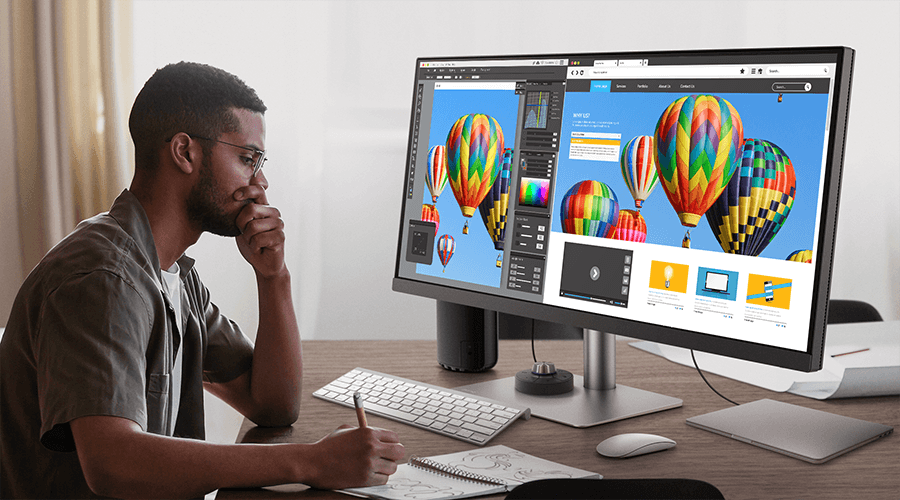

Soft proofing, by definition, uses a monitor to preview the outcome of the printout before printed. Think of the monitor as a simulator, which simulates the combined effect of the printer, ink and paper. When conducting a color accuracy demonstration, very often you will see a monitor placed next to a viewing booth where the printouts are placed, for the sake of comparison. In theory, it is not necessary to place the printout and the viewing booth beside the monitor, but to demonstrate how well the image on the monitor can match the actual printout, it is necessary in practice.
In order to prove the soft proof can truly work, it is very important to have a consistent viewing condition to review the hardcopy. Soft proofing can only deliver the best result under one set of viewing conditions, including ambient lighting, the surrounding wall colors, the status of monitor, and the light which the prints are being reviewed. Therefore, it is essential to have all the elements fixed and keep them the same as the time when the ICC profiles are created.
The biggest benefit of soft proofing is that it saves ink, paper and time before the final output. Usually, there will be lots of revisions of “colors” before the final output, and each requires lots of ink, paper and time before you get a satisfactory hardcopy proof. Doing it in a digital way, such as soft proofing, can minimize the waste of ink, paper and time during the revisions. However, this is not saying that soft proofing can replace hardcopy proof entirely, but can surely save most of the iterations in between. The end goal of this is for producing accurate hardcopy proof that can be used for final approval, official proposals, and legal purposes.
Another reason why soft proofing should be utilized nowadays is that we don’t necessarily send our files to the print shops around us anymore. The print shops could be located half an earth away. In this case, if we still rely on hardcopy proof, then it will take at least a whole week for the hardcopy to be sent from the print shop to us, and then another whole week from us to the print shop. Think about the cost, fuel and time involved in the shipping, then you will agree that soft proofing is more efficient than hardcopy proofing. Soft proofing had not been very popular in the past decade since the technology was not ready. Nowadays, the technology is here: accurate monitor, quality color management systems, and easy-to-use ICC profiles. These are all in place as the fundamental elements to make soft proofing effective and efficient.


Get One Free Year Pantone Connect
$90 value






